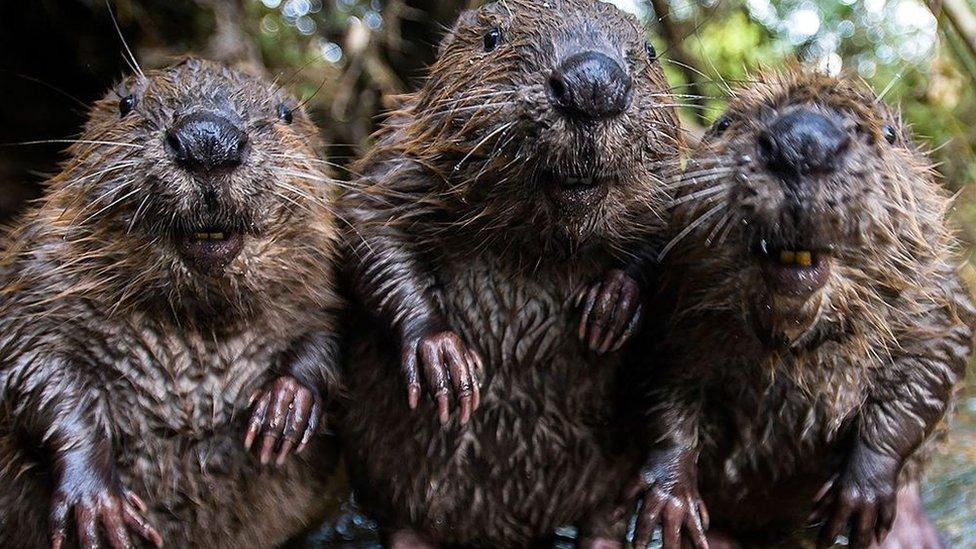Wildlife: A quarter of Britain's mammals face extinction
- Published
- comments

A new report warns that red squirrels and beavers are among the species of British mammals under threat of extinction.
The first official Red List for British mammals, which uses international criteria to assess threats to wildlife, shows 11 out of 47 mammals native to the country are at risk of dying out.
The near extinction of these animals has almost entirely been brought on by humans, caused by hunting, loss of habitats through building, the use of chemicals on land and the introduction of new species.
Which animal is helping the red squirrel? (2018)
Those at the highest risk of going extinct include wildcats, with fewer than 20 in the wild in Scotland, along with greater mouse-eared bats of which there is only one that is known to still be living wild in Britain.
Beavers, which have been reintroduced in recent years after being hunted to extinction in the 1600s, are also endangered as well as red squirrels, water voles and grey long-eared bats.
Hedgehogs and hazel dormice are classed as vulnerable, with a further five species including mountain hares and harvest mice now considered as 'near threatened' meaning they could soon face the risk of extinction.
There is thought to be only one greater mouse-eared bat living in the wild in Britian
Critically endangered: Wildcat, greater mouse-eared bat.
Endangered: Beaver, red squirrel, water vole, grey long-eared bat.
Vulnerable: Hedgehog, hazel dormouse, Orkney vole, Serotine bat, Barbastelle bat.
Near threatened: Mountain hare, harvest mouse, lesser white-toothed shrew, Leisler's bat, Nathusius' pipistrelle.
Extinct: European wolf.
Britain has a limited number of native mammals because of the Ice Age, which happened thousands of years ago. The cold temperatures in Britain forced many animals to cross over into mainland Europe. At the time there was a land bridge between England, the English channel and Europe.
The European wolf, which vanished from Britain in the 17th century, is classed as extinct in the assessment, which looks back as far as the year 1500, but lynx and bear are not included as they went extinct in Britain before that time.
There are fewer than 20 wildcats living in the wild in Scotland
Mammal Society chairwoman and professor at the University of Sussex Fiona Mathews, who led the report, says it's good that some land owners and building developers are trying to protect wildlife:
"It's about right across the whole of the landscape, whether it's urban areas (cities), or rural areas (countryside), we are making space so other animals can get the resources they need, so they have food and have shelter, because that's the only realistic way forward."
Harvest mice could soon be under threat because of the loss of long grassland
Professor Mathews said there is a need to take action on species that are near threatened, such as harvest mice, which are vanishing because of the loss of long grassland on farms, the edges of fields and roadside verges.
"Once an animal becomes endangered or critically endangered, it's really a scramble for time to put measures in place to rescue them, so we need to be taking a hard look at the species on the next level down so that it doesn't become a crisis," she warned.
Natural England chairman Tony Juniper said the "protection and restoration of large areas of suitable habitat" is central to the recovery of mammals.
He added: "This is a wake-up call but it is not too late to act."
- Published20 November 2019
- Published6 October 2019
- Published28 July 2020
